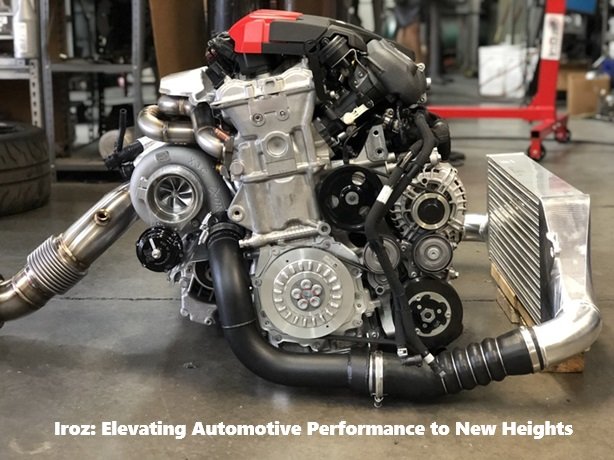AWD vs. RWD: When purchasing a vehicle, one of the most critical decisions you’ll make is choosing between an all-wheel-drive (AWD) and a rear-wheel-drive (RWD) drivetrain. Both options have their strengths and weaknesses, and the right choice depends on your driving habits, the environment you live in, and what you value most in a vehicle. This article will explore the differences between AWD and RWD, helping you determine which drivetrain is best suited for your needs.
1. Understanding Drivetrains
Before diving into the comparison, it’s essential to understand what AWD vs RWD means and how they work.
a. Rear-Wheel Drive (RWD)
RWD vehicles send power from the engine to the rear wheels. This setup has been around for over a century and is commonly found in performance cars, trucks, and some sedans. The front wheels are responsible for steering, while the rear wheels handle the acceleration. This separation of duties allows for a balanced distribution of weight and power, which can enhance driving dynamics and handling.
b. All-wheel drive (AWD)
AWD systems distribute power to all four wheels of the vehicle. There are two types of AWD systems: full-time and part-time. Full-time AWD continuously sends power to all four wheels, while part-time AWD systems engage the additional wheels only when the vehicle senses a loss of traction. AWD systems are often found in SUVs, crossovers, and some sedans, particularly those designed for all-weather performance.
2. Performance and Handling
The performance and handling characteristics of a vehicle are significantly influenced by its drivetrain.
a. Performance in RWD Vehicles
RWD is the preferred drivetrain for many sports cars and performance vehicles. This is because RWD offers better weight distribution and allows for more precise handling. With power being sent to the rear wheels, RWD vehicles can accelerate more efficiently and handle corners with greater control. The rear-wheel drive system also allows for oversteer, which can be advantageous for skilled drivers who enjoy a more dynamic driving experience.
However, RWD vehicles can be more challenging to drive in poor weather conditions, such as rain or snow. Since the rear wheels handle all the power, they can lose traction more easily on slippery surfaces, leading to fishtailing or spinning out.
b. Performance in AWD Vehicles
AWD vehicles excel in providing stability and control, especially in adverse weather conditions. By distributing power to all four wheels, AWD systems enhance traction and reduce the likelihood of slipping or losing control. This makes AWD a popular choice for drivers who frequently encounter snow, ice, or rain.
In terms of handling, AWD vehicles are generally more forgiving and easier to drive for the average motorist. The added traction allows for better acceleration on slippery surfaces and can help prevent understeer and oversteer, making AWD vehicles feel more stable in a variety of driving conditions. However, AWD vs. RWD systems can add weight to the vehicle, which might slightly reduce fuel efficiency and impact handling performance compared to a lighter RWD vehicle.
3. Weather and Terrain Considerations
Your local climate and typical driving terrain play a crucial role in determining whether AWD or RWD is the better option for you.
a. RWD in Various Conditions
RWD vehicles perform best in dry, clear conditions. On dry pavement, the weight distribution and handling characteristics of RWD vehicles provide a more engaging driving experience. However, when the roads are wet or icy, RWD vehicles can become more difficult to control. The rear tires can lose traction, leading to a loss of control, especially if the vehicle is not equipped with modern traction control systems.
If you live in a region with mild winters and well-maintained roads, RWD could be a good choice. Performance enthusiasts and those who prioritize driving dynamics may also prefer RWD regardless of climate.
b. AWD in Various Conditions
AWD systems are designed to handle a wider range of conditions, making them ideal for areas with variable weather. In snow, ice, or heavy rain, AWD provides added traction and stability, making it easier to maintain control of the vehicle. This is particularly beneficial in hilly or mountainous areas where road conditions can change rapidly.
For those who live in regions with harsh winters or frequently drive on unpaved or poorly maintained roads, AWD is often the preferred choice. The extra confidence provided by AWD can make a significant difference in safety and peace of mind.
4. Fuel Efficiency and Maintenance
Another factor to consider when choosing between AWD and RWD is the impact on fuel efficiency and maintenance costs.
a. Fuel Efficiency in RWD Vehicles
RWD vehicles are generally more fuel-efficient than AWD vehicles. The simplicity of the RWD system, which only sends power to two wheels, means there’s less mechanical drag, resulting in better fuel economy. Additionally, RWD vehicles tend to be lighter than their AWD counterparts, further improving efficiency.
b. Fuel Efficiency in AWD Vehicles
AWD vehicles typically consume more fuel than RWD vehicles due to the added weight and complexity of the AWD system. Powering all four wheels requires more energy, which can reduce overall fuel efficiency. However, advancements in technology have made modern AWD systems more efficient than in the past, narrowing the gap somewhat.
c. Maintenance Considerations
When it comes to maintenance, RWD vehicles tend to be less complex and therefore cheaper to maintain. The drivetrain components are easier to access and there are fewer moving parts compared to AWD systems.
AWD systems, on the other hand, are more complex and require more maintenance. The additional components in an AWD system—such as the transfer case, additional differentials, and extra driveshafts—can increase the likelihood of needing repairs. Additionally, tires on an AWD vehicle must be rotated more frequently and replaced as a set to avoid differences in tire diameter, which can cause strain on the AWD system.
5. Driving Experience and Comfort
The driving experience and overall comfort of a vehicle can also be influenced by the drivetrain.
a. Driving Comfort in RWD Vehicles
RWD vehicles are often praised for their smooth and balanced driving experience. The separation of steering and power delivery between the front and rear wheels results in a more predictable and refined driving feel. Luxury sedans and high-performance sports cars often feature RWD for this reason.
However, in low-traction situations, such as steep inclines or slick roads, RWD vehicles can be less comfortable to drive. The potential for rear-wheel slippage can make driving feel more stressful, especially for those not accustomed to handling an RWD vehicle.
b. Driving Comfort in AWD Vehicles
AWD vehicles offer a more confident and secure driving experience in a variety of conditions. The enhanced traction and stability can make driving more comfortable and less stressful, especially in adverse weather or on challenging terrain. Many crossovers and SUVs equipped with AWD are designed with comfort in mind, making them suitable for long trips and family use.
However, the added weight and complexity of the AWD system can sometimes result in a stiffer ride compared to RWD vehicles. Some drivers may also notice a slight reduction in steering precision due to the front wheels being responsible for both steering and power delivery.
6. Cost and Resale Value
Finally, cost is always an important consideration when choosing a drivetrain.
a. Initial Cost
AWD vehicles are generally more expensive than their RWD counterparts. The additional technology and components required for AWD systems increase the manufacturing cost, which is passed on to the consumer. If budget is a primary concern, RWD may be the more affordable option.
b. Resale Value
When it comes to resale value, AWD vehicles often retain their value better than RWD vehicles, especially in regions where winter weather is a factor. The increased demand for AWD vehicles in these areas can lead to higher resale prices. However, in warmer climates where AWD is less necessary, the resale value difference may be negligible.
Conclusion: Which Drivetrain Is Right for You?
Choosing between AWD vs RWD depends on your specific needs and preferences. If you prioritize performance, handling, and fuel efficiency, and live in an area with mild weather, a RWD vehicle may be the best choice. On the other hand, if you value safety, stability, and all-weather capability, especially in regions with harsh winters or variable terrain, AWD is likely the better option.
Ultimately, the decision comes down to what you need from your vehicle. Understanding the strengths and weaknesses of each drivetrain can help you make an informed choice that matches your driving style and environment. Whether you choose AWD vs RWD, both offer unique benefits that can enhance your driving experience.




